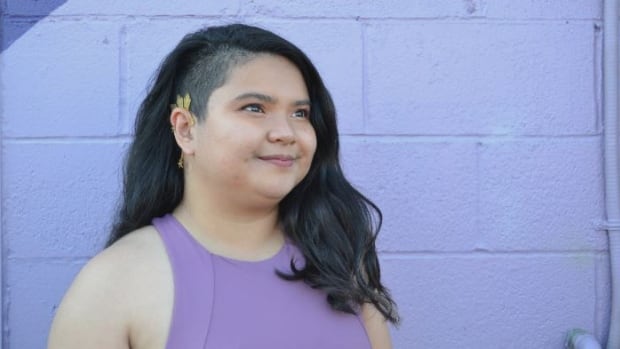
Movement is medicine according to Edmonton fitness trainer Erika Sikat, but barriers are making it unaccessible for many folks with disabilities.
CBC’s Edmonton AM explored what accessible fitness looks like.
Part 1: Erika Sikat leads Edmonton AM’s Kim Nakrieko through a fitness routine
ES: I’m Erica Sikat. I am a certified personal trainer based in Edmonton. So, whenever I take in new clients, I always walk them through a consultation process where I get to know their health history, exercise history and goals. What health concerns have you had in the past or do you currently have?
KN: At the moment my big issue is my eyes. I have a few concerns. The main one that has really kind of impacted how I have to think about things is glaucoma. And I’m pretty good at adapting, but sometimes I just feel a bit overwhelmed because I work out alone now. I used to go to the gym a lot, but after the pandemic I stopped doing that too. So to keep it interesting at home, but also do the things that are going to help me hit my goals while keeping my safety in mind.
Edmonton AM5:35Making fitness accessible for everyone
Featured VideoMovement is medicine. For folks with disabilities, access to movement may be limited. For the next four weeks, we are focusing on accessibility in fitness. Erika Sikat will be our guide. She’s an Edmonton-based trainer who has made accessibility her number one goal.
ES: That makes so much sense. And thank you for sharing your health history. And truly with glaucoma you really have to be careful. It’s good that you came to a personal trainer first for guidance because it’s a condition you don’t want to play with. You can really damage your optic nerve when you do strenuous exercises. So for folks with glaucoma, I would recommend getting cleared out by your doctor first.
When it comes to exercise, what I know with glaucoma is that we have to avoid going straight into strenuous exercises or no heavy weights and as well as no exercises on inverted positions anything that can bring too much high pressure to your eyes. So we’ll begin with foundational stuff and mostly mobility, joint alignment, proper form and technique while exercising. You’ll get an optimal effect on your exercise instead of excessive strenuous where it’s not really incorrect form.
KN: That sounds good.
ES: Today we’re gonna begin with banded pull aparts. This exercise warms up your back muscles and your shoulder muscles. So with this one, we’re going to keep straight back breathing in and out. Perfect.
The next one would be shoulder presses. This is kind of similar to the banded pull aparts in a way. We’re keeping our back straight as always, shoulders rolled back and then we’re going to be holding your dumbbells like this, slightly angled.
KN: Now, why did you choose that one for me versus let’s say a push-up?
ES: I choose shoulder presses because it’s in a standing position and you’re in a supported position. It’s safe for your glaucoma, safe for your eyes compared to a push up where you’ll be pushing against the ground and it will bring so much pressure on your eyes as you do it. There’s so much strain, so we will do shoulder presses in the in and out.
Perfect exercises should be chosen in alignment to your goals, and you nailed that game.
KN: How do you feel when you see someone have some success and feel, frankly, really heard?
ES: To be honest, when I see folk work with the customized plane that I made and that they’re doing well, feeling good while moving; it brings such a rewarding feeling for me. I feel so happy to see them having fun. For them feeling the mystified with fitness and it becomes less intimidating. That’s the goal. I want people to feel less intimidated and having fun as well as learning about their body and how to move incorrect form.
KN: So what got you started in this? What made you want to be a little different? How do you see that as a career?
ES: My first inspiration is actually my grandmother. So growing up in the Philippines when I was young, she had a stroke for the first time unfortunately. We weren’t able to afford medical treatments for her.
So what I noticed is she would take tiny steps in the morning, do her morning walks, and she would practice her grip on a tennis ball. With practice she was able to recover and live long, healthy years after that. I think that was the first time that planted [the idea] that movement can be healing for us. I really think that accessibility should be prioritized in mainstream fitness. I don’t want to be the only personal trainer who prioritizes accessibility in fitness.
Note: Transcripts may contain errors. If you wish to re-use all, or part of, a transcript, please contact CBC for permission. Please check the corresponding audio before quoting in print. Copyright © CBC 2023
